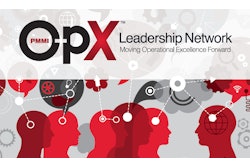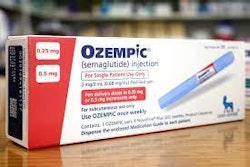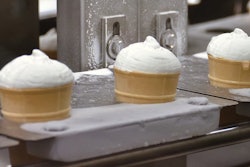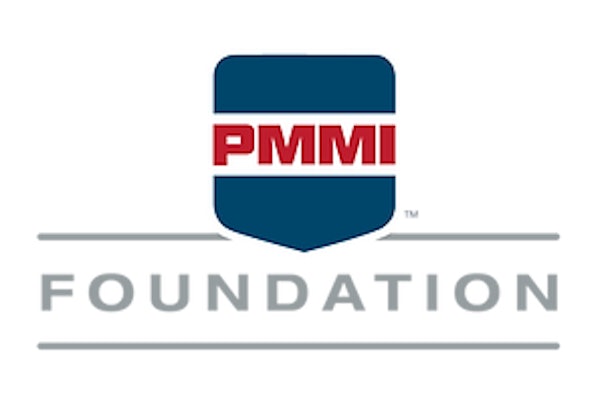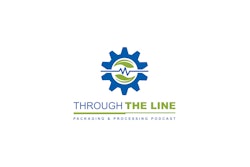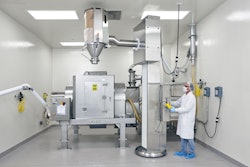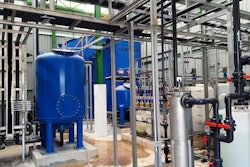Jorge Izquierdo, VP, Market Development shares key findings from PMMI's State of the Industry Report, including growth trends, supply chain challenges, and the impact of labor shortages. He emphasizes the importance of technology and intuitive equipment design in addressing workforce challenges, and highlights the expanding opportunities in warehousing driven by e-commerce and fulfillment operations.
Sean Riley:
So with all the fancy introductions out of the way, welcome back to the podcast, our good friend Jorge Izquierdo. Hi Jorge.
Jorge Izquierdo:
Hey Sean. How are you doing? It's good to be back. It's been a while. Nice to chat with you.
Sean Riley:
It has been a while and it's always our pleasure to have you back. So we're talking pretty big stuff here, state of the industry. And I know the past few years have been pretty unique in a bunch of different ways. So how were the uniqueness of the last couple of years, how did that impact the packaging machinery market?
Jorge Izquierdo:
Sean, I guess you used the word unique and there were certainly different significant impact for the industry, for our lives. COVID was certainly a disruption in many different ways. For our industry however, COVID, the change in consumption patterns by all of the consumers created a significant increase in demand for packaging machinery. If you look at 2020, the first half of 2020 was a slowdown because of COVID. Nobody knew exactly what to expect. And then the second half is just a rush of investment on the industry. A lot of new orders on the second half of 2020. Backlogs increased significantly on 2020. A lot of those orders weren't delivered until 2021 because of the increased backlogs. Demand in 2021 kept very strong.
2021 was a record year in terms of how we are tracking the industry. We grew over 60% in one single year. It was interesting because if you recall looking back, we have also those supply chain problems from components, a lot on electronics, everything. So when you add up the increasing demand, the problems with supply chain, backlogs went up again significantly. Delivery times were increasing significantly as well. So that's 2021. 2022 was also a very robust year in terms of demand. Not as aggressive. It was not 16%, it was more like between 12% and 13% growth. Still very aggressive. And mainly when you say it's 12%, 13% growth on top of 16, that's a lot of growth in two years.
Sean Riley:
I'd say.
Jorge Izquierdo:
Yeah. Again, the delivery times extended significantly, backlog grew a lot. And it wasn't until this year '23 that we found that backlogs start to alleviate a little. On one hand it's all these supply chain problems while not completely resolved, they have increased significantly. It's that on one side, and also the demand is not as aggressive as it was in '21, '22. So some of that backlog, it's being alleviated. And again, these past two years have been crazy and I think this year, next year we're going to start seeing something a little more regular in terms of demand for equipment.
Sean Riley:
A little bit of normalizing. Yeah, I could understand that a bit. So I can tell from what you're saying that supply chain, I feel like we hear about it a ton and it's had an impact. And is it something that is improving? We're learning from it, it's improving because we're learning from it. Are delivery time still too long in general? Have we learned anything from the past couple of years, or is it still something where it's log jammed?
Jorge Izquierdo:
For sure, we've learned. And I guess here manufacturers of equipment have learned and need to be very careful with is fine tuning the stock you keep of parts. You want to make sure you have all the components to deliver the equipment, right? I do recall in some cases in 2021, end of 2021, beginning of 2022, where some manufacturers of equipment actually ship the equipment without the electronics. So to buy some time on shipping and getting the equipment on site and installed and those getting two, three, four additional weeks just to be able to get the electronics, bring the electronics and install the electronics on site. So I guess the learning here is more about how to balance your stock. You want to make sure you have enough components to deliver the equipment to your customers. You don't want to get trapped with millions of dollars in stock that suddenly you're not going to use because that money is dropping.
And I guess that's where MMI, BI, business intelligence, we thought to be honest, a good job in trying to keep our members updated. The state of the industry is a great product. It tells you looking back what happened, gives you an idea what's going to happen into the future. But we have other products that are also very valuable. We have the house business. House business is basically telling you what's happening now, right? The combination of these two products for our members is a very good way to get a feeling of what's happening, not just in your company, but in the industry. And as you were saying, part of the learning is how can you use this information to fine tune the stock of parts that you have to make sure that supply chain, the impact of supply chain is not as significant in your company as it was in the past two years.
Sean Riley:
Perfect. You gave me a perfect segue because I'm wondering, with what you said about the how's business and based off of that and the state of the industry report, let's think about this year. How's the industry looking for 2023?
Jorge Izquierdo:
So in terms of growth in '23, it's going to be a growth year. Many of our members started the year basically with a significant backlog. Many of them, pretty much all the production for the year was sold out at the beginning of the year. And now when you start to look at new orders, there is certainly a slow down on the pace of new orders. We are expecting the growth of the industry for 2023 to be around 3%, three 4% maybe. So it's a significant slow down versus the double digit numbers of '21 and 2022.
However, normally when you have these kind of significant increase on the size of the demand of the market, what follows is a significant drop, right? That's normal. In this case, that's not what we are finding. It's a slow down, we're still on the positive side again for 2023, we're expecting that around 3%, 4% of growth. Now looking ahead 2024, we think it's going to be a flat year. Many in the space where on manufacturing there's an expectation of and a slow down and a slight recession.
Now in the space where thankful that packaging... We rely a lot on food, beverage and some industries that tend to be very consistent. We keep eating, we keep drinking, we keep cleaning our houses even during recessions. So that helped to level the demand for packaging machinery even in bad years. So next year we are expecting it to be a little flat year, maybe something 1% growth, something like that. Flat pretty much for 2024. Now, looking more into the future, like 2025, 2026, that's when we are expecting more regular growth in terms of the normal patterns for the industry. We're talking about maybe 5%, 6% growth for those years.
Sean Riley:
And as you say, if we go pre pandemic, that's how packaging and processing worked, where those numbers were similar to the teens and the early two thousands, correct?
Jorge Izquierdo:
That's correct. And again, that's what we're expecting to get to in '25, '26, a little more regular in terms of the normalizations of the industry.
Sean Riley:
Okay. With that being said, what are the trends that are driving the industry? I know workforce is... I feel like I'm going to ask the question, but I know the answer anyway, but I'll ask it. Is workforce still the major issue that it's posing? And is there anything new that's cropped up that's causing either good things or bad things in the industry?
Jorge Izquierdo:
You're totally right, Sean. Labor is very significant both for the users of equipment, the CPG companies, many of them, and for manufacturers of equipment. And that's having an effect of the designs of what end users of equipment are looking for. So they're looking for a lot of ways for technology to address their workforce challenges. And they are sometimes simple things like, hey, please help me train my operator and could be things such as on MHI you have the videos on how to operate your equipment. Like you can say, hey, I need to clean the machine. You can directly call a video how to clean the machine, and the operator can learn directly. Or if not learning, recall the process directly. And some of those things are pretty simple. Manufacturers of equipment are working hard, trying to make their equipment a little more intuitive to operate.
Equipment, it's getting more sophisticated. We are demanding more and more things for the equipment. We're demanding a lot of flexibility, and that requires more sophisticated technologies. But on the other hand, manufacturers of the equipment, OEMs are really working hard to make it more intuitive. Other technologies like remote are certainly trying to come in and help in filling that skill gap for the operators and technicians, right? Where if you have a problem with your equipment, you are not sure what to do, you can remotely dial to the service technician from the OEM and ask him, hey, what's the problem? What should I do? And then you have in some cases, like these smart glasses and augmented reality and a lot of different tools that can help you fill that gap. And that's for sure one of the big things on how OEMs are trying to address these workforce challenges that everybody's suffering. But you were asking also what's beyond, what else is happening, what new things are happening, what you're finding on the market?
I guess the one thing that's interesting for us, and we think there are significant opportunities there is in warehousing. Traditionally in the warehouses at CPG operations, normally there are a lot of pallets and forklifts moving those pallets around, maybe some labeling equipment, just trying to make sure that the pallets get to the right place, and that was it right? In these past two years, e-commerce grew significantly. A lot of companies working on direct to consumer, working on B2B, sometimes filling orders directly to stores or different institutional customers.
What's happening in warehouses is they're now investing more in packaging equipment. The fulfillment that's happening now in warehouses are requiring the investment in case packing, shrink wrap, packing, more labeling, of course, palletizing, and not just traditional pallets, a lot of mixed pallets. The growth in terms of shipments of mixed pallets is significant. Basically what I'm trying to say here Sean, is traditionally packaging machinery, the space of packaging machinery was limited to the operations of the companies. Now we're moving more towards the warehouses and assisting with the fulfillment. Sometimes it's inside of the CPGs, sometimes it's with third party logistic companies, sometimes contract packages, contract manufacturers doing that job. But that part is growing, it's good opportunities there.
Sean Riley:
That's interesting, as it's a nice plug for our... We did a podcast on the warehousing study that your business intelligence department did, so that's a nice reminder for our listeners to be on the lookout for that. That's definitely something they want to take a listen to because it touches on a lot of what you were just talking about in warehousing.
Jorge Izquierdo:
Yeah, it's happening and we are finding it in many different places. I guess that's one of the reasons on this last show in Vegas, we have our logistics billion. That's exactly the reason. And because of that, we're also finding increased opportunity for end of line equipment. Or we think that the growth of end of line equipment will be faster than used to be in the coming years.
Sean Riley:
That's perfect. A perfect button to put on the end of what was a great conversation. I want to thank you, Jorge, for coming on here, taking time out of your day to come on here and talk to us about a pretty big issue, the state of our industry. Thank you again for taking time out of your day to come on here on the podcast.
Jorge Izquierdo:
Sean, it's my pleasure. It's always nice to chat with you, Sean. Take care.



